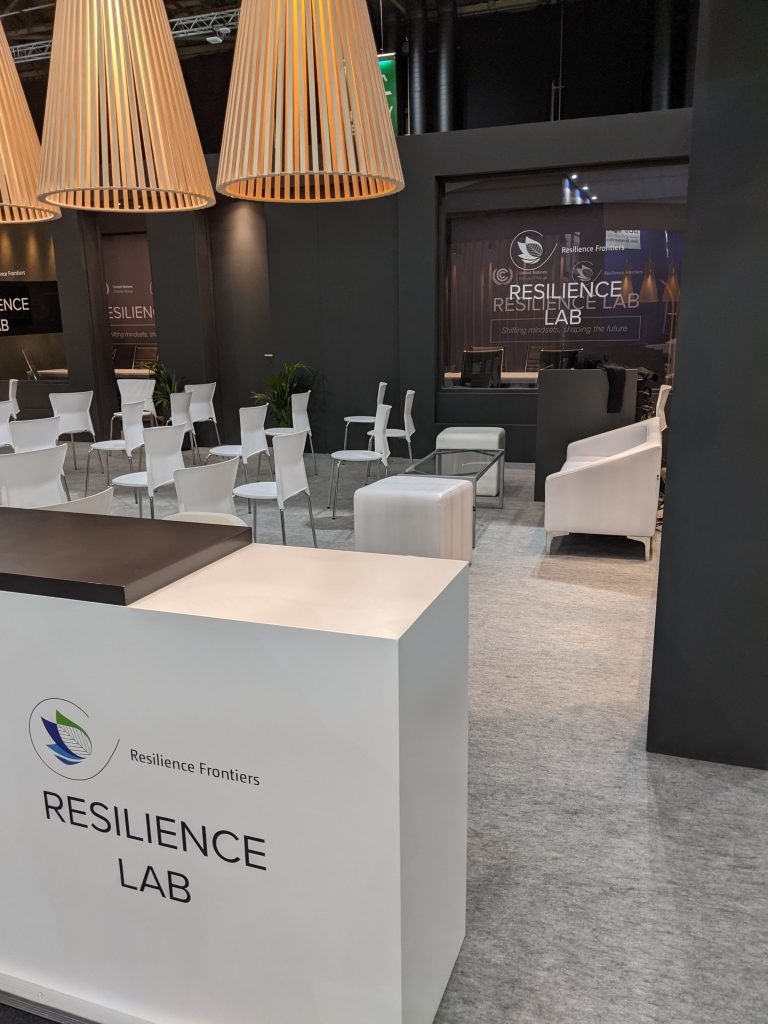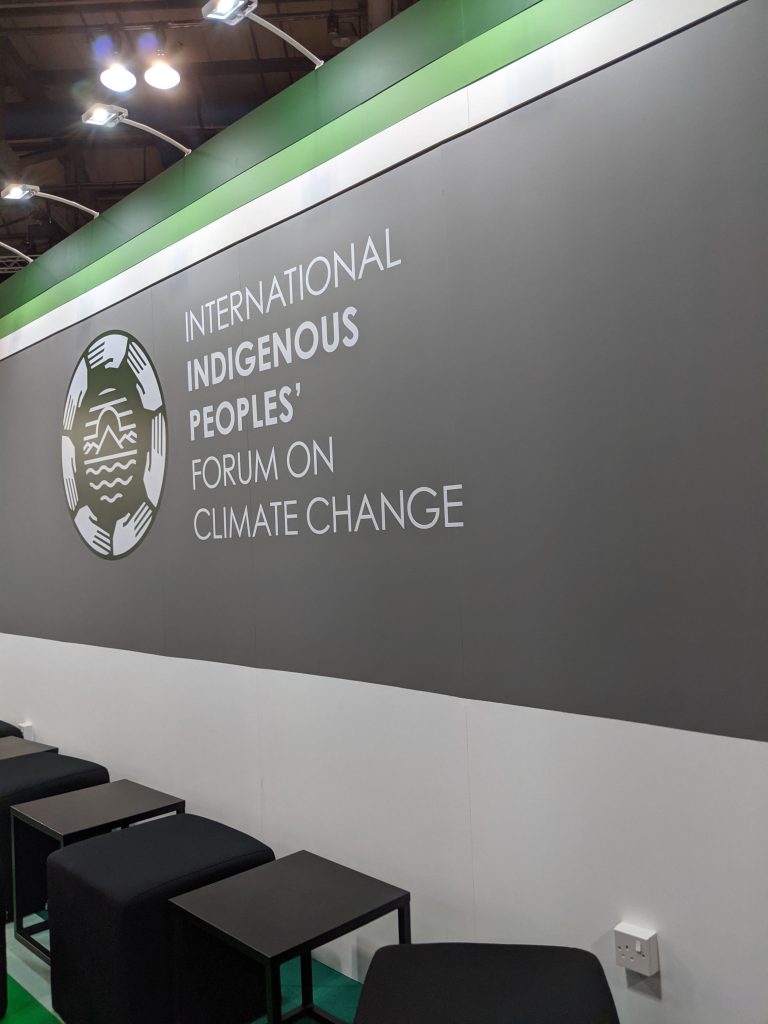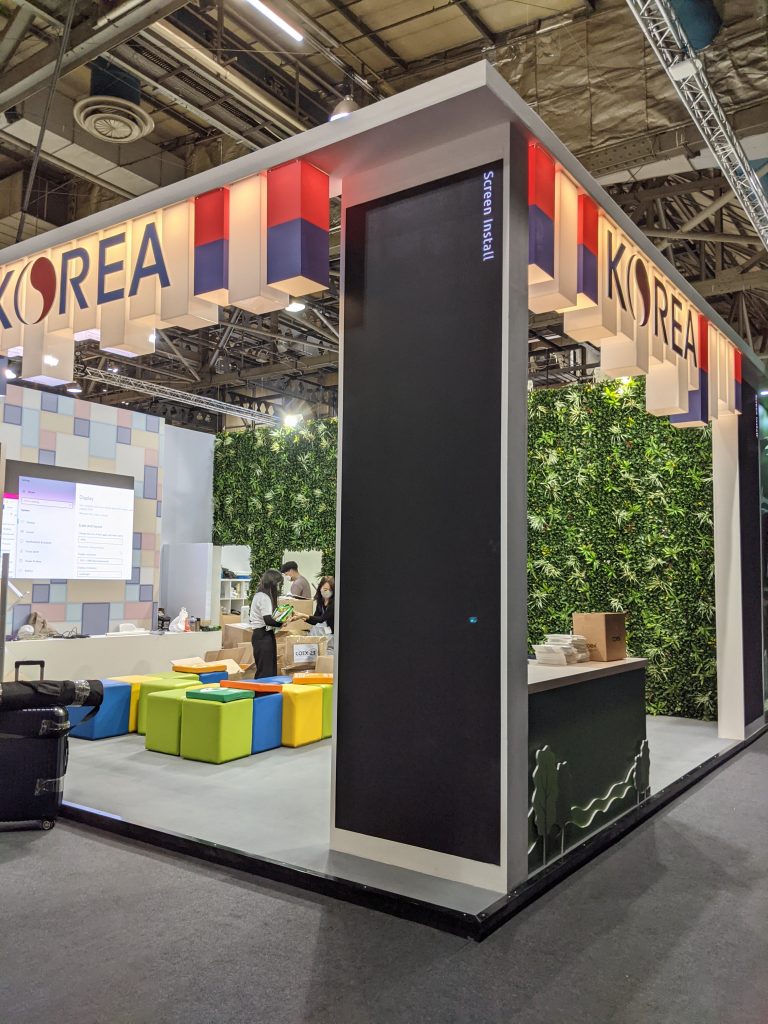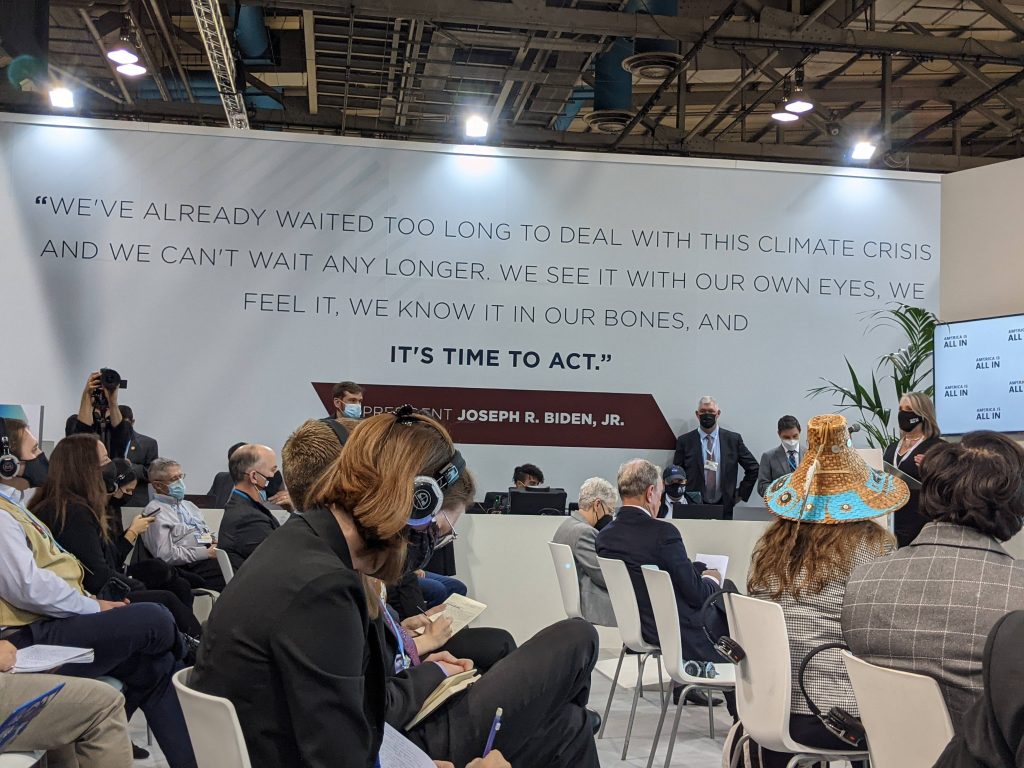If you’ve been following this blog and all that Alicia & Daniel have been up to this week (which has been a lot!!), you might now be wondering how the Swarthmore delegates choose which activities to pursue while at the conference. And if you haven’t thought about this, it’s worth considering just how massive this annual conference is and how many concurrent events there are at any given time!
At every COP, there are many types of events. Here’s a quick breakdown.
First, there’s the Blue Zone. This very, very large area (often several buildings) can only be accessed with an official badge.
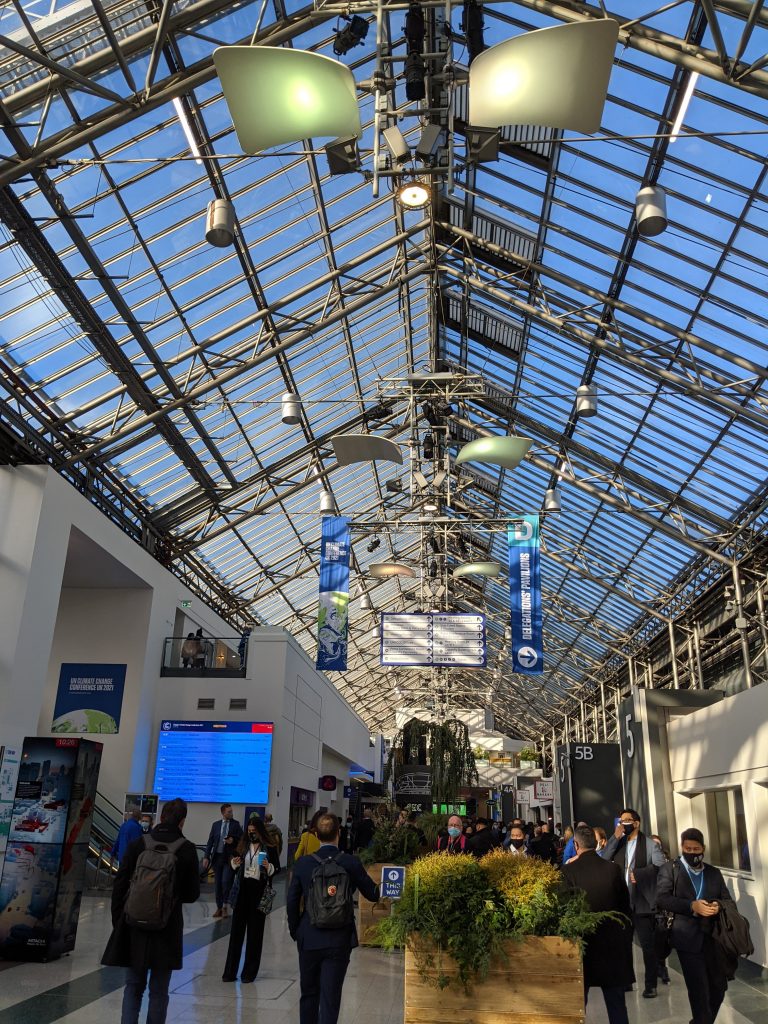
The Swarthmore delegation has “observer” badges, while other people have “party” badges (which means they are officially part of a country’s negotiating team). Within the Blue Zone, observer delegates only have access to some of the various types of events. At the most formal level, there are plenaries and a number of types of negotiating sessions. Observer delegates can often attend plenaries and sometimes can attend negotiating sessions. However, observers were restricted from attending any of these events during the first two days of COP26 — with the reason given being that it was the World Leaders Summit (with many heads of state in attendance) and there were more restrictive quotas set due to COVID.
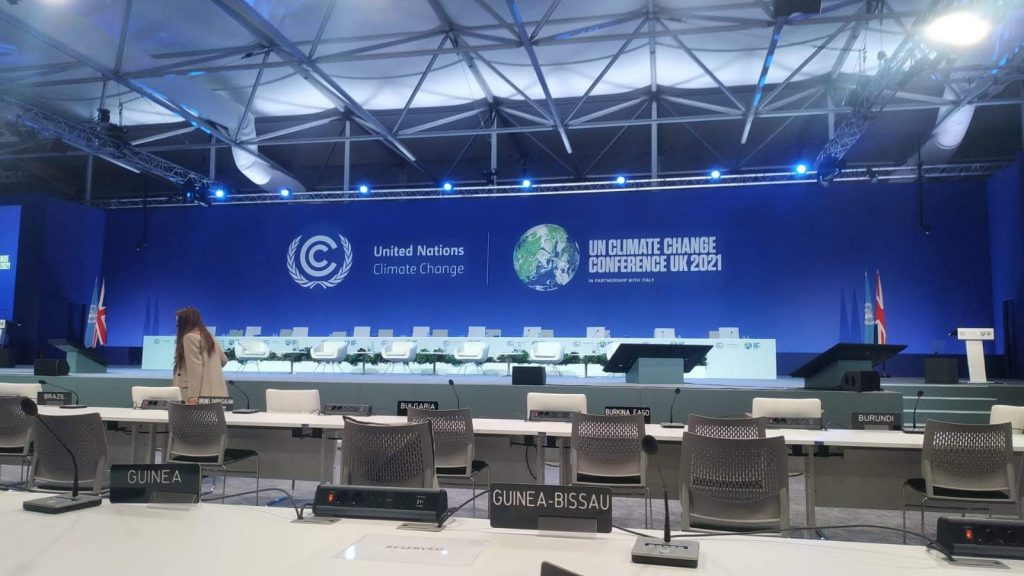
Still within the Blue Zone, there are also other events that are open to all badge types. Many if not most of these occur within pavilions, which are temporary structures rented by countries, NGOs, and others. Each pavilion has its own 2-week slate of events! Pavilions are quite substantial structures themselves, often with space for several dozen people. That said, the size (& therefore cost) of pavilions varies, and this is one of many ways in which there are disparities in access between countries (a bit more on that later).
Another location where events in the Blue Zone occur is the Action Zone, which has the most informal & colorful feel of the space.
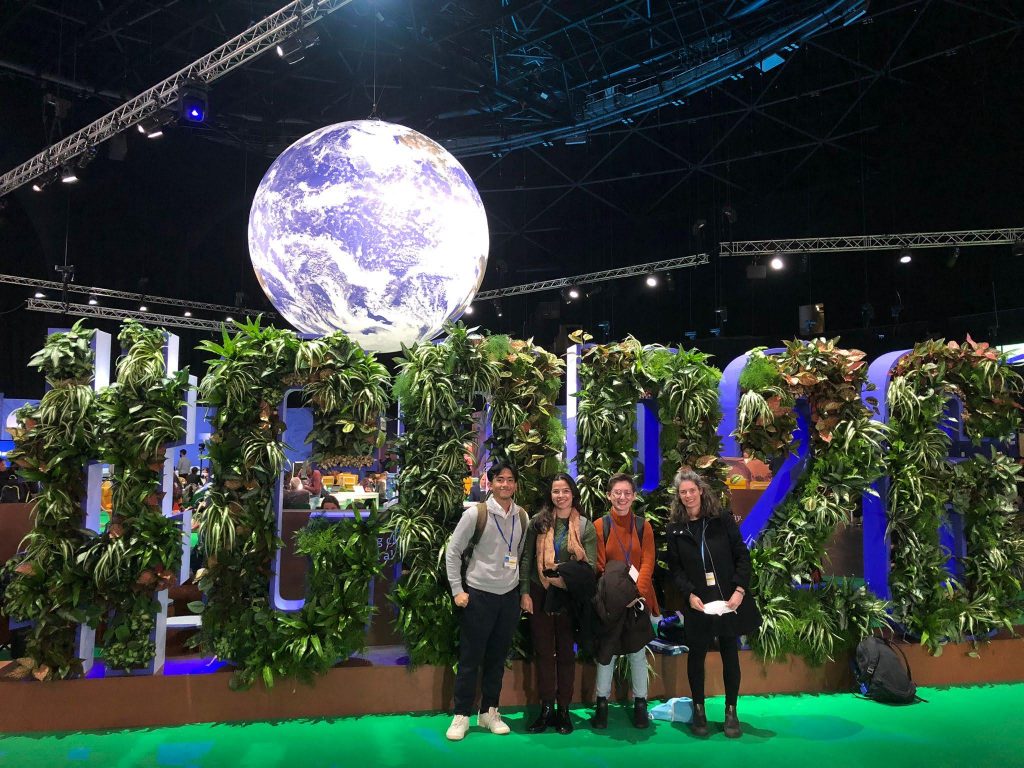
In addition to all of this, there is an entirely different area called the Green Zone. This venue is open to the public; badges are not needed. The Green Zone is about a 15 minute walk or short (electric) bus ride from the Blue Zone. We stopped by the Green Zone this morning and found it to be something like a massive, climate-focused science fair filled with dozens of hands-on science exhibitions and hundreds of local schoolchildren. There are also lectures and film screenings and other neat events occurring in side rooms of this venue. (I don’t have a great photo of the Green Zone yet, but will try to add one to this post soon!)
Finally, there are other big events, often protests, that occur outside of both zones. See here for some initial pictures from The Guardian: https://www.theguardian.com/environment/gallery/2021/nov/03/cop26-finance-protest-and-indigenous-voices-in-pictures
While we’re talking about the COP venue, it’s worth mentioning that accessibility is a huge challenge — and is perhaps more so this year than ever before due to COVID. Challenges started even before COP26 began, with many delegations having a hard time planning for and then traveling to the UK because of vaccination disparities and the requirement of quarantine periods for unvaccinated delegates. (The UK offered to pay for vaccinations & quarantine hotels, but the process has been abysmal.) Another big challenge in planning is that there are limited flights to/from some locations, and so some delegates are needing to stay for abnormally long periods in the UK (or, of course, not coming at all).
There was also a lot of confusion leading right up to the first day of COP26 regarding how daily COVID testing would work. (It turns out we each have to take a rapid test every morning and then present results during our security check-in.) We’ve also heard that official party delegates who remain in quarantine (either because of post-travel requirements or because of several positive cases that have occurred) are having trouble accessing their negotiation sessions virtually because the online platform for delegates is quite terrible. Finally, actually getting inside of the Blue Zone has been a very slow process each morning — with sometimes a multi-hour wait standing in line outside.
As Daniel has mentioned, the Glasgow Climate Dialogues (and many others) have called for a UNFCCC action plan to increase accessibility at future COPs. Given the logistical missteps that have occurred this year, there is unfortunately a long way to go to achieve this extremely important goal.
